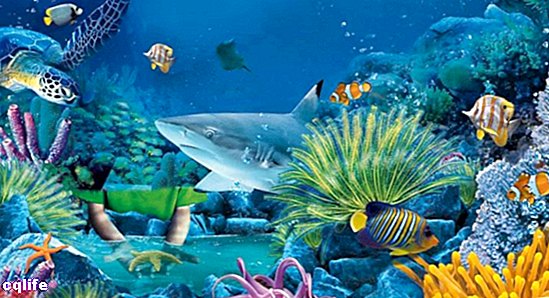- What is habitat and ecological niche?
- Differences between habitat and ecological niche
- Examples of habitat and ecological niche
We explain what habitat is, what is an ecological niche, and what are their differences. Also, some specific examples of both.

What is habitat and ecological niche?
These terms are often used when talking about species animals, as if they were synonyms. But they are not and we will see why later.
Habitat refers to the physical place where a certain organism lives, be it an animal, fungus, plant or microorganism. Is he environment whose physical conditions are conducive for it to grow, develop and reproduce. However, this environment is usually populated by one or more species, and can be as wide as a Forest, or as reduced as the stones of the sea coast or even the intestinal tract of another living being.
The ecological niche is a concept that refers to the way in which a specific species or a set from organisms within a specific habitat and always in relation to both environmental conditions and the other species that coexist in said space. In other words: the ecological niche of a species is its specific relationship with the other elements of its ecosystem.
Thus, two different types of ecological niche are usually identified:
- Fundamental or potential. It is thought from the minimum conditions that a species determined (and only it) requires to subsist.
- Cash or real. It is thought from those same needs, but within the framework of competition and interrelation with other species.
In conclusion, in the same habitat many ecological niches can be identified, as many as there are species.
For example: In a jungle tropical (habitat) we can find many species of birds and frogs, but each one has its specific ecological niche: the first will be the predators and prey from the treetops, while the latter will be from the humid spaces of the foliage.
Differences between habitat and ecological niche
These concepts are fundamentally distinguished in the approach to life of the species that each one offers. As we have said, the notion of habitat hardly alludes to the physical environment in which an animal develops biologically, and in which it is possible to identify many other species, since life never occurs in isolation.
On the other hand, when we speak of an ecological niche, we start from understanding the species in question within the dynamics ecological in which it inhabits and develops, that is, inserted in an ecosystem within which it plays a specific role. The struggle for survival, as is clear from Darwin's concepts, involves many types of relationships with the environment biotic (alive) and abiotic (inanimate), and in the ecological niche they are all taken into account.
Examples of habitat and ecological niche

Here are some specific examples of habitat and ecological niche:
- Common cockroach (Periplaneta americana). Their habitat is varied, as they are tremendously adaptable, but they can be found in urban contexts, such as dark, warm buildings or inside sewers. Their ecological niche has to do with their role as urban scavengers, especially at night, of reproduction rapid and massive that turns them into a pestilence for communities urban areas, where their natural predators, such as scorpions, spiders, birds and amphibians.
- Common hawk (Accipter nisus). Its habitat is the wooded areas of scattered trees, frequent in the temperate regions of Europe Y Asia. Its ecological niche positions it as an important predator of small species of birds, although they can also eat chicks directly from the nest or even carrion, and sometimes small mammals like bats. It is a very adaptable carnivorous bird, which in turn supports Owls, Eagles, Hawks and Foxes.
- Common paramecium (Paramecium aurelia). The habitat of this unicellular organism is stagnant waters or the banks of rivers and ponds. Its ecological niche has to do with acidic waters rich in bacteria, from which this microorganism. They play an important role in the decomposition of the organic material in aquatic ecosystems and supporting larger protists and extremely small animals.
